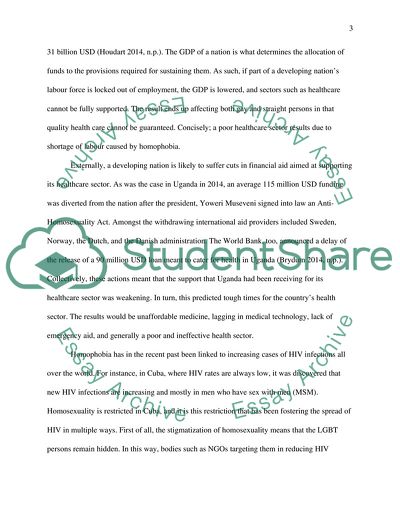Cite this document
(Impacts of Homophobia on a Developing Nation Essay, n.d.)
Impacts of Homophobia on a Developing Nation Essay. https://studentshare.org/sociology/1867228-asses-the-impact-of-negative-behaviours-and-attitudes-towards-gay-people-homophobia-on-health-in-a-developing-nation
Impacts of Homophobia on a Developing Nation Essay. https://studentshare.org/sociology/1867228-asses-the-impact-of-negative-behaviours-and-attitudes-towards-gay-people-homophobia-on-health-in-a-developing-nation
(Impacts of Homophobia on a Developing Nation Essay)
Impacts of Homophobia on a Developing Nation Essay. https://studentshare.org/sociology/1867228-asses-the-impact-of-negative-behaviours-and-attitudes-towards-gay-people-homophobia-on-health-in-a-developing-nation.
Impacts of Homophobia on a Developing Nation Essay. https://studentshare.org/sociology/1867228-asses-the-impact-of-negative-behaviours-and-attitudes-towards-gay-people-homophobia-on-health-in-a-developing-nation.
“Impacts of Homophobia on a Developing Nation Essay”. https://studentshare.org/sociology/1867228-asses-the-impact-of-negative-behaviours-and-attitudes-towards-gay-people-homophobia-on-health-in-a-developing-nation.


